In this guide, we will take up on air compressors, classification of air compressors and also see some popular types of air compressors along with their working in brief.
What is an Air Compressor?
Air Compressors are mechanical devices that intake air at atmospheric pressure (low pressure) and convert it into a high-pressure air. Compressors have a wide range of applications in consumer appliances as well as industrial devices. These applications include cleaning dust from cabinets or cupboards, filling up air in tires, powering pneumatic tools, compression of refrigerants in HVAC and refrigerator systems, operating brakes in large vehicles (buses, trucks and trains) to name a few. You might be familiar with a simple hand-operated bicycle pumps that fill air in small tires and balls. This is an example of a simple air compressor. Now-a-days, we are using electric motor based air compressors to fill air in tires of all kinds of automobiles. While there are a lot of power tools for industrial use, the automobile industry relies heavily on compressed air to power pneumatic tools. Hence, you can find air compressors even in small local garages. Air wrenches, paint sprayers, polishers are some important tools that garages, workshops and body shops use with compressed air.
Classification of Air Compressors
There are several ways to classify air compressors on the basis of pressure ranges, pressure ratio, capacity, overall design and also on the principle of operation.
Best 20 gallon air compressors Best Air Compressor For Home Garage Best 30 gallon air compressors Best 12v air compressors Best air compressor Best Portable Air Compressors Best Shop Air Compressors
Pressure Range
Low Pressure Air Compressors – less than 145 psi (10 bar) Medium Pressure Air Compressors – between 145 – 1,160 psi (10 – 80 bar) High Pressure Air Compressors – between 80 – 1,000 bar Very High Pressure or Hyper Pressure Air Compressors – greater than 1,000 bar
Volume Flow Rate or Capacity
Low-Capacity Air Compressors – less than 0.15m3/s Medium Capacity Air Compressors – between 0.15 – 5m3/s High-Capacity Air Compressors – greater than 5m3/s
Design and Principle of Operation
Positive Displacement Compressors Dynamic Compressors
A Positive Displacement Compressor will increase the air pressure by reducing the volume of the air/gas. Further, we have two more types of compressors in this: Reciprocating Compressors and Rotary Compressors. Coming to Dynamic Compressor, a rotating rotor will impart some kinetic energy to air/gas and as a result increases the pressure of the air/gas. There are two more types in this: a Turbo Compressor and a Sector Compressor. The following image shows a detailed classification of air compressors on the basis of design and operating principle.
Different Types of Air Compressors
Even though there are several types of air compressors, only a few of them are very popular and common. They are:
Reciprocating Compressors Rotary Compressors Centrifugal Compressors Axial Flow Compressors
Reciprocating Compressors
In reciprocating compressors, there will be a reciprocating piston moving axially in a cylinder and it reduces the volume of the air/ga and increases its pressure. Depending on the output pressure requirements, we can have single or multi-cylinder and single or multi-stage compressors. The following image shows a simplified schematic of a reciprocating compressor. As the piston reciprocates back and forth, the suction and discharge valves control the suction of air/gas and compression of air/gas.
We can compare the working of a reciprocating compressor to that of a two-stroke engine. One revolution of the crank will complete both the suction and compression of the air/gas. The pressure difference between the cylinder and the inlet/outlet manifolds will cause the inlet (suction) and outlet (discharge) valves to open and close. The inlet manifold will have a pressure approximately equal to the atmospheric pressure whereas the outlet manifold will have the pressure of the compressed air. To increase the pressure of the air, reciprocating compressors come with multi-stage design. A typical single stage reciprocating compressor can deliver a pressure up to 6 bar. Two Stage (a type of multi-stage) Reciprocating Compressors are very popular in small garages and workshops and can produce pressure in the range of 5 – 35 bar. A three-stage compressor can deliver pressure in the range of 35 – 85 bar.
Rotary Compressors
The next type of air compressor is a Rotary Compressor. They are usually small in size and produce relatively less pressure. For example, a dentist’s vacuum system consists of a rotary compressor. There are two important types of rotary compressors: Screw and Vane. A Screw Compressor is an extremely popular type of air compressor in the industrial segment. You can find screw compressors with power range of 40 to 500HP. The name “Screw” Compressor comes from the fact that they have two different screws in the housing of the compressor. These screws have opposite threading i.e., one screw has a right-hand thread while the other has a left-hand thread.
Both these screws are meshed and synchronized using a timing gear set. A motor rotates the drive shaft, which in turn rotates the screws. As they rotate, they intake air and trap it in the cavities between the threads. This trapped air has high pressure. Coming to Vane type rotary compressors, again there are two types: Fixed Vane and Multiple Vane. In fixed vane type rotary compressor, the axis of rotation of the roller’s rotating shaft lines up with the center of the cylinder but it is eccentric to the roller itself. This shaft creates suction and compression of air/gas.
In multiple vane type rotary compressor, the axis of rotation of the roller’s shaft lines up with the roller but it is eccentric to the cylinder. This creates a sliding vane and the rotor has several slots that align with the sliding vane. When the compressor is running, the centrifugal forces of the rotor make the sliding vane to be held against the cylinder. A four-vane rotary compressor produces four compression strokes in one rotation.
Centrifugal Compressors
Next, we have dynamic compressor. Specifically, the centrifugal compressor is a type of Turbo Compressor. In this type of air compressors, the pressure of the air/gas increases as a result of conversion of angular momentum of a high-speed impeller into static pressure, which is imparted on the air/gas. Centrifugal Compressors have a steady flow and hence they produce less noise and vibrations than reciprocating counterparts. The following image shows the impeller of a centrifugal compressor.
A low-pressure air enters through the center/eye of the impeller and passes through a flow passage consisting of several blades. These blades rotate at a very high speed and the air passing through these blades gain momentum and static pressure.
Axial Flow Compressors
Another type of turbo compressor is an Axial Flow Compressor. In this type, the air/gas flows in parallel to the axis of the machine. Axial Compressors consists of several stages of rotor and stator blades. They are very large devices and operate over 1000hp. The following image shows an industrial 5-stage axial flow compressor.
All the rotors are connected to a common drive shaft but each set of rotors is separated by a set of stators.
Conclusion
Air Compressors are very useful device in domestic as well as industrial applications. There are different types of air compressors based on the output pressure, design and principle of operation. We saw some popular types if air compressors in this guide. Comment * Name * Email * Website
Δ



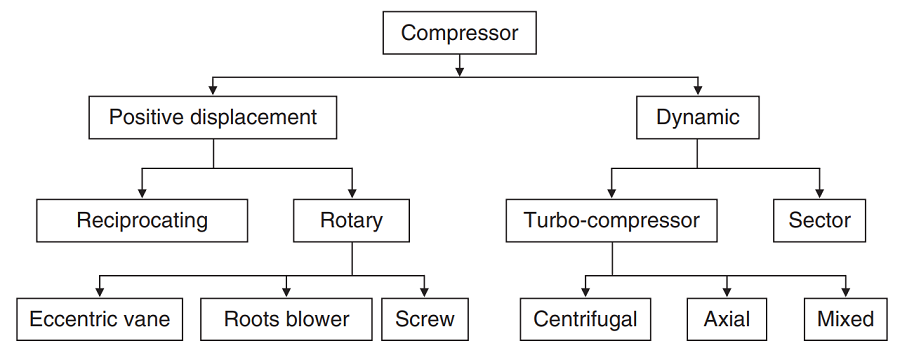
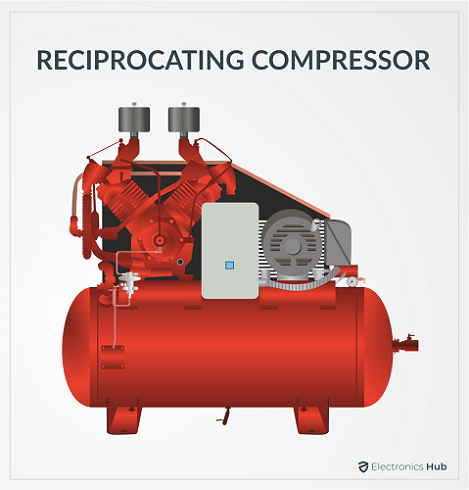
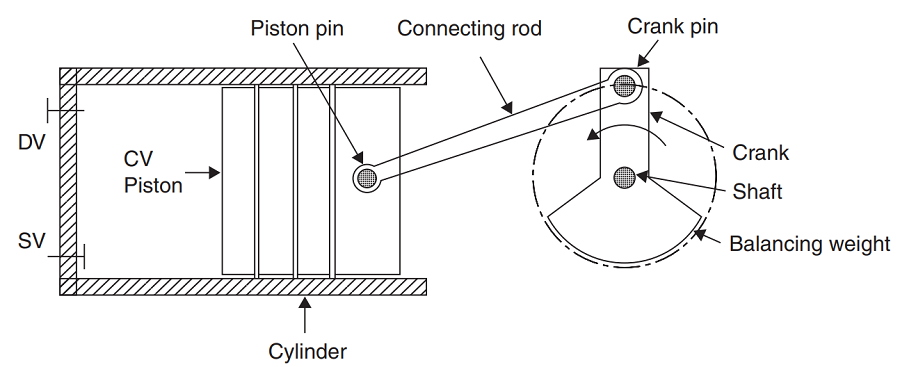
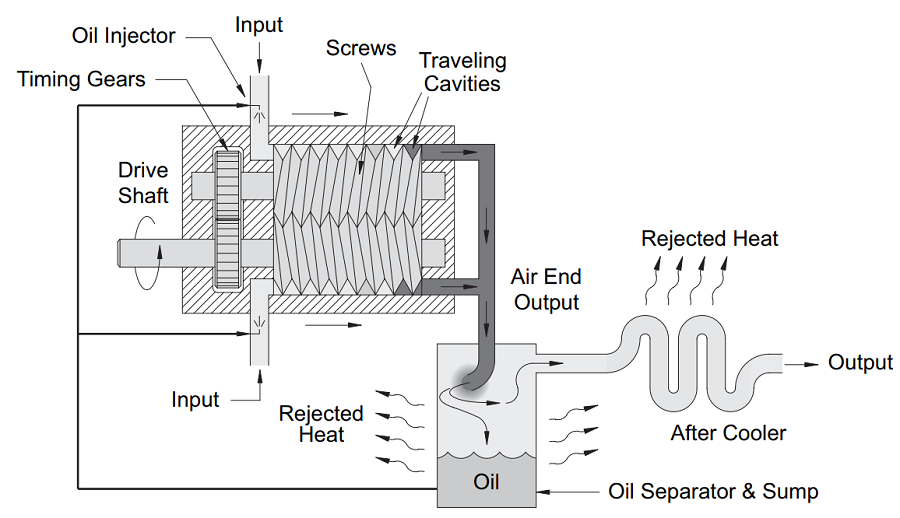
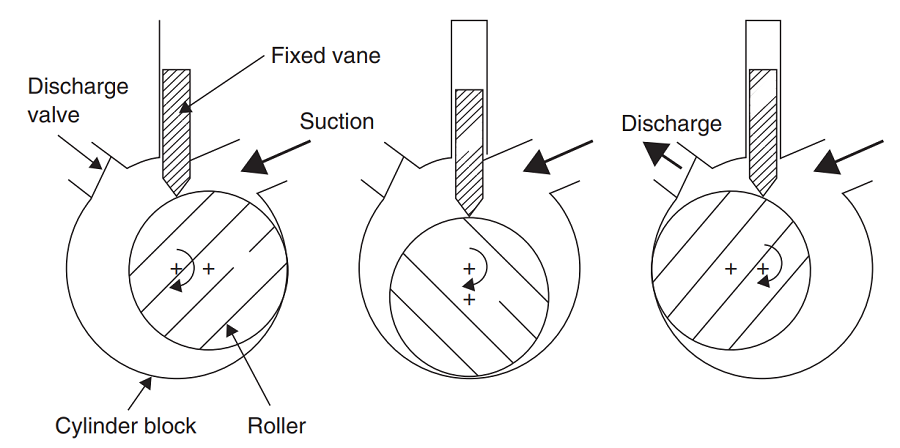
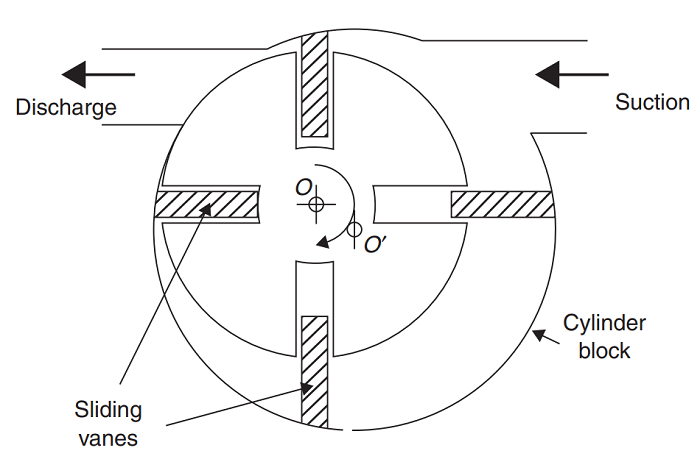
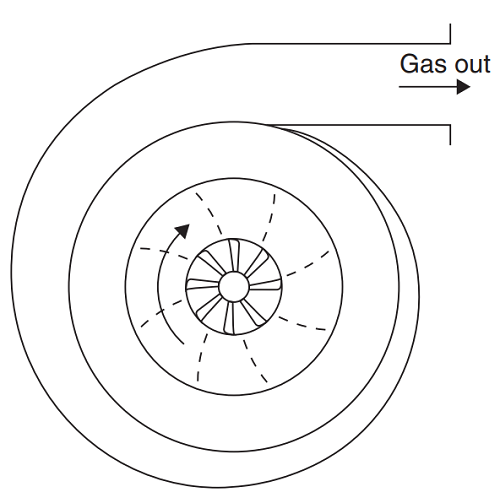
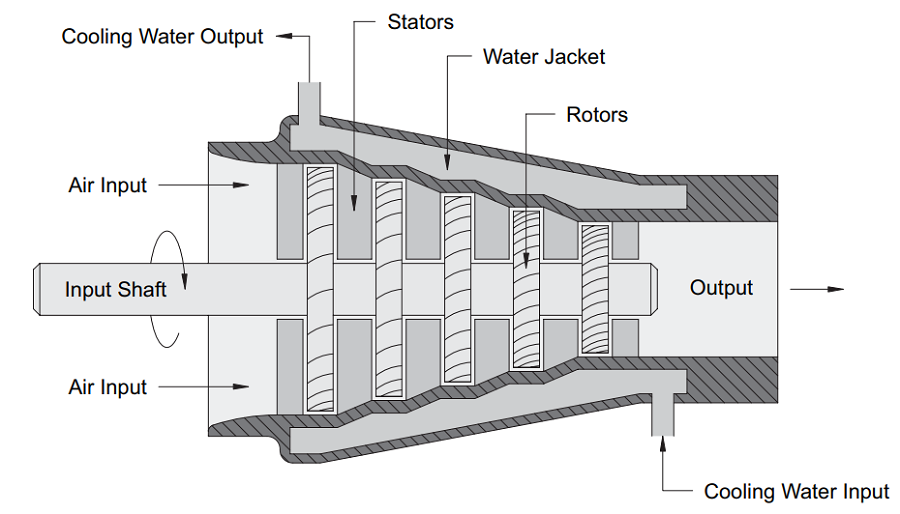


![]()